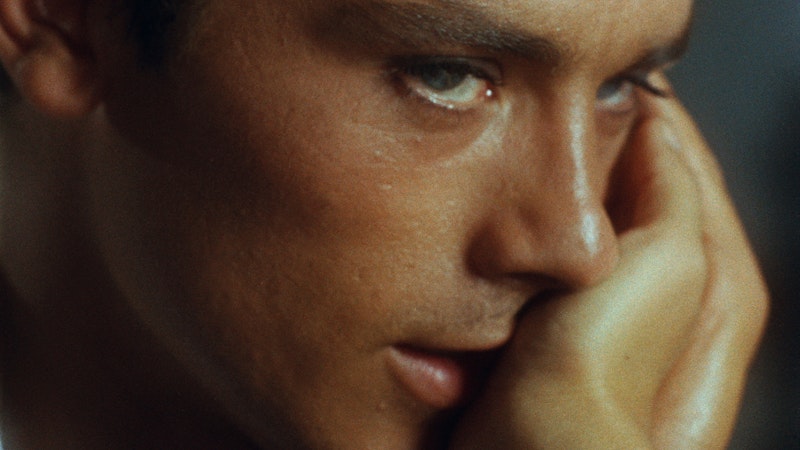Is there such a thing as the perfect crime? Our sense of justice forces us to say that villains should get caught. Maybe not immediately but the hope is that eventually they’ll pay for their crimes. For the unusual protagonist in René Clément’s Purple Noon (1960) comeuppance arrives. Alain Delon plays Tom Ripley (the main character of Patricia Highsmith’s 1955 novel, The Talented Mr. Ripley), a man who befriends Philippe Greenleaf (Maurice Ronet), brutally kills him, and assumes his identity. Philippe’s girlfriend, Marge, along with other mutual friends, is thrown into Tom’s murderous charade.
Hired by Philippe’s father, Tom travels to Italy under the auspices to bring Philippe back home to America. Philippe finds this amusing and rather than rejecting and avoiding Tom, he invites him into his close circle of friends. Philippe has a lot of money, so the search for pleasure isn’t thwarted by something so pedestrian as poverty. He comes from an upper-class family, whereas Tom’s origins are unclear. One thing is clear, however: he doesn’t move easily among the upper crust, since he doesn’t speak their “language.” No matter how hard he tries, he remains an outsider.
At first, Philippe is entertained by Tom’s lack of finesse and insecurity. But his constant presence becomes a nuisance. As Philippe and Marge are getting ready to sail, Tom appears to be tagging along. Three’s a crowd, and the initial indifference to Tom, and amusement about who he is, quickly dissipates in the cramped quarters of the sailing boat. Suddenly, Philippe begins to see Tom as an enemy, jokingly suspects that Tom might kill him, steal his identity, money, and even Marge.
Tom’s awkwardness works in his favor, and he plays into the joke, describing to Philippe how he plans to become him. In the midst of Philippe’s laughter, Tom grabs a knife and kills him. The sea becomes violent and unstable but Tom prevails in getting rid of the body, stealing important documents and Philippe’s typewriter, and aggressively eating fruit following the murder.
A dangerous game ensues. Tom wears Philippe’s clothes (which he was secretly trying on prior to murder), forges his signature to collect money, and convinces Marge that Philippe is alive but that he doesn’t want to see her or anyone else. Philippe’s American friend, Freddy Miles, is the only one who figures out early on what actually happened, but it’s too late: Tom kills him as well. The body, lifeless on the floor of an expensive Italian apartment, is difficult to ignore, but Tom does. While the body of Freddy Miles is enveloped in darkness, Tom eats a roasted chicken in the kitchen like a feral and rabid dog, all the while wearing Philippe’s haute couture clothes.
Moving between two identities, Tom eludes the authorities until his secrets are revealed. Philippe’s father is trying to sell the sailboat, and as the boat is moved, the body of Philippe Greenleaf is tied to the propeller of the boat. As the police comes to arrest him, Tom is blissfully unaware that he’s been caught. The crime was not perfect at all.
The ending of the film is far different from the book, in which Tom gets away with murder. Highsmith intended to leave things slightly ambiguous, making Tom a paranoid character, always looking over his shoulder, wondering whether he’ll be caught. This imposed morality in the film does appear to be heavy-handed, particularly since Tom is played by Delon, who brings an intense quality and essence that is the center of this cinematic feast.
Delon’s attractiveness is nicely juxtaposed with Tom Ripley’s awkwardness. But this is what makes Ripley “talented.” He’s lost in his own essence, which is unknown to all. He emulates Philippe but it’s not clear why. He’s running away from himself, and the more he engages in being a fugitive, the more it’s clear that it isn’t the police or Philippe’s friends that he’s running away from. Even when he looks in the mirror, he refuses to see himself. Rather, he repeats Philippe’s loving words to Marge, all the while parading in Philippe’s expensive blazers.
Tom’s an awkward criminal. Delon plays him with such precision, his facial expressions and body language moving from cold-blooded and piercing evil man to a little, insecure boy, in a world of make-believe where murdering people and stealing their identities is child’s play and fun. For all the forcefulness of wanting to become Philippe Greenleaf, Tom still doesn’t fit the metaphysical mold of another person, and appears rather pathetic.
However, he can’t be called innocent. It’s precisely the amiable awkwardness of Tom Ripley that makes him evil. He’s that friend who really isn’t a friend, but who follows you around, seeking approval all the while trying to emulate you. You feel sorry for him, and feel like there’s nothing you can do, and that this companionship is pointless. But so is getting rid of him. So, you let him hang around because it elevates your ego a bit, until one day, you have enough and cast this aimless blob aside. This is an exact dynamic between Tom and Philippe, and one which ends fatally for all involved.
Delon brings a nuanced performance to the film. He’s cold and calculating, innocent, boyish, manly, awkward, pitiable, and even slightly loving. What makes him evil is the talent to be all at once, and what makes everyone quiver is the realization that this somewhat nice nuisance is a cold-blooded killer. In the end, Tom Ripley’s talent is to be an unavoidable nobody.

